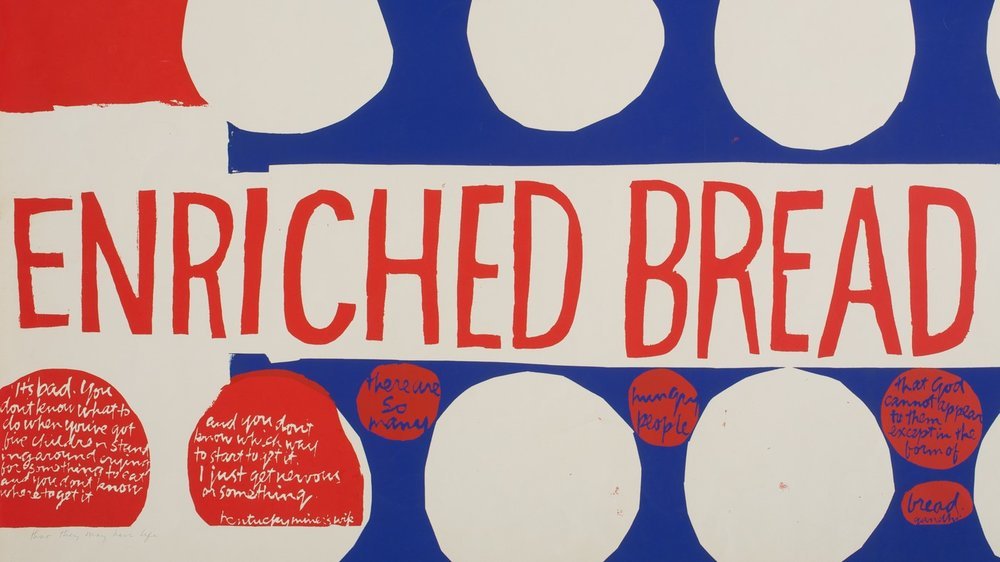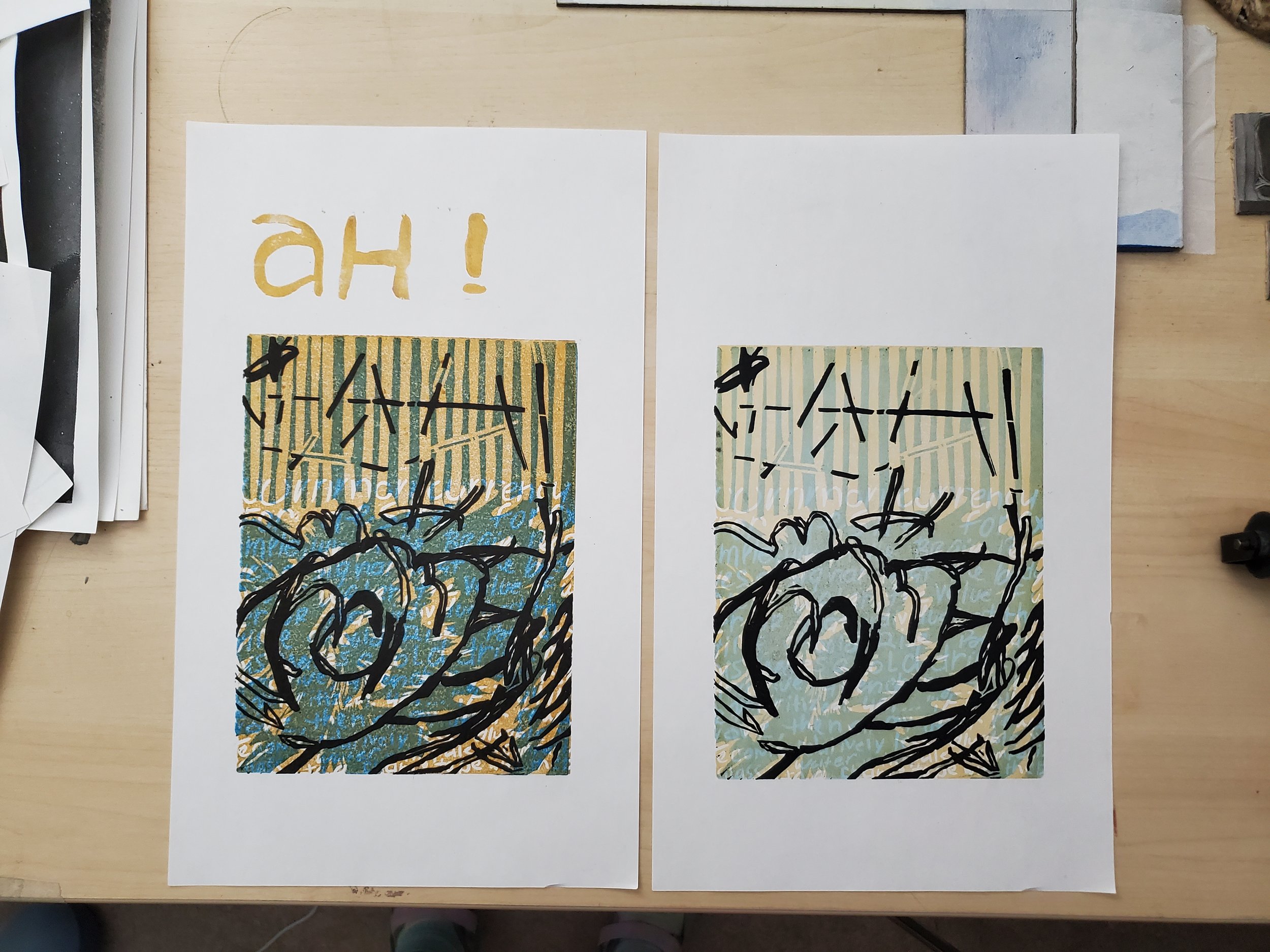Dopamine, the layering of imagery, and meeting yourself
A process video touching on carving these three blocks, printing them together, changing the colors, three times, three prints. A writing practice, a reading aloud practice.
Video
I used a real camera! And real video editing software! So proud
I've learned a lot from other printmakers in the video game - lots of excellent carvers, printers and content creators out there. I've also learned a lot from making super short reels covering the process of a linocut from beginning to end - a totally worthwhile exercise to condense a sequence of events into several seconds.
With this video, which was made for a long-form platform, I wanted to 'attend to the sensory', highlighting the sounds and sights of printing that are so engaging in-person. I also just generally want to watch people make stuff, like Bob Ross painting, so I guess I'll make what I wanna see in the world - a video watching somebody carve and print. Maybe I'll make it a recurring thing. Interested?
Process and the what
I've been thinking about layering imagery, combining elements that don't immediately communicate their relationship, and how to include text in different ways.
This linocut was inspired by silkscreen prints by Sister Corita Kent in the early 60's, who used transparency, text, the hand written, and varying levels of legibility to make meditations on food and spirituality. Scrawled poems, cropped signage-esque lettering, and the language of branding are asymmetrically balanced to draw your focus to the spiritual messaging of Del Monte tomatoes, or the communal act of breaking bread, with Wonder Bread.
Corita Kent, that they may have life, 1964, serigraph
Courtesy of the Corita Kent Art Center, Immaculate Heart Community, Los Angeles, CA
The text in my three-color print was plucked out of my OneNote archive of thoughts and collected ideas and articles. I hand-wrote it, carved it backwards, and placed it in relationship with the mark making above it, created for the occasion, an abstract blooming, outstretched network - flower vibes.
Calling on some of Kent’s techniques, negative text, layering, the handwritten in contrast to the sampled ad text. I wanted to carve out the letters, showing paper color, so the next color would layer on top of this contrasting text field, illuminating the letters below and, at the same time, pushing back the surrounding field with color mixing. In other words, I wanted the words to glow.
The text reads, "…common currency system for desire. For example, when the brain receives a signal that the body needs water, the value of water for that individual at that time should rise. Because this makes a cold drink more attractive, quenching thirst will be prioritized, avoiding dehydration. Yet, Schultz explains, “If I fall in love, then all my other rewards become relatively less valuable.” A glass of water will pale in comparison to a chance to be with the beloved.” That common currency for desire is dopamine, handy neurotransmitter.
You can also hear it here.
Basically, dopamine marries motivation with action. Where we derive satisfaction is driven by what we feel we need in the moment, whether thats really the most important thing for us or not. Sometimes we betray ourselves; maybe our brain is telling us exactly what we need and we are not open to it, or it might be leading us down a weird path but the controls are stuck.
Why
Something about focus and priority, finding what you need when you need it, and, as always: emotional logic, the indecipherable and the lost within language.
Language and the voice
Writing, and later, reading what I write, is a strategy I use to get to know myself. Nearing the end of the video, I slip in a reading of the text in this print. As a strategy to understand and embrace my own brain and workings, this writing practice, this reading aloud practice, sometimes makes me squirm and usually helps me meet myself in a way I can’t otherwise. Maybe its confrontation, or externalizing squishy thoughts and feelings, maybe it’s just giving myself permission to take up space outside of my own head. It’s uncomfortable, but hey so is staying small.
So if you haven’t been forced to listen to yourself read what you write, give it a try, its kinda out-of-body. Till next time?


